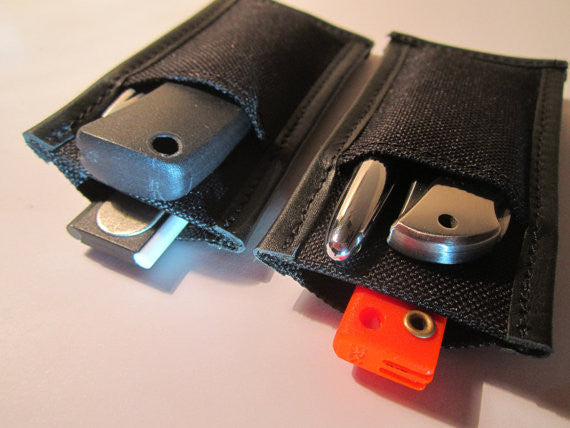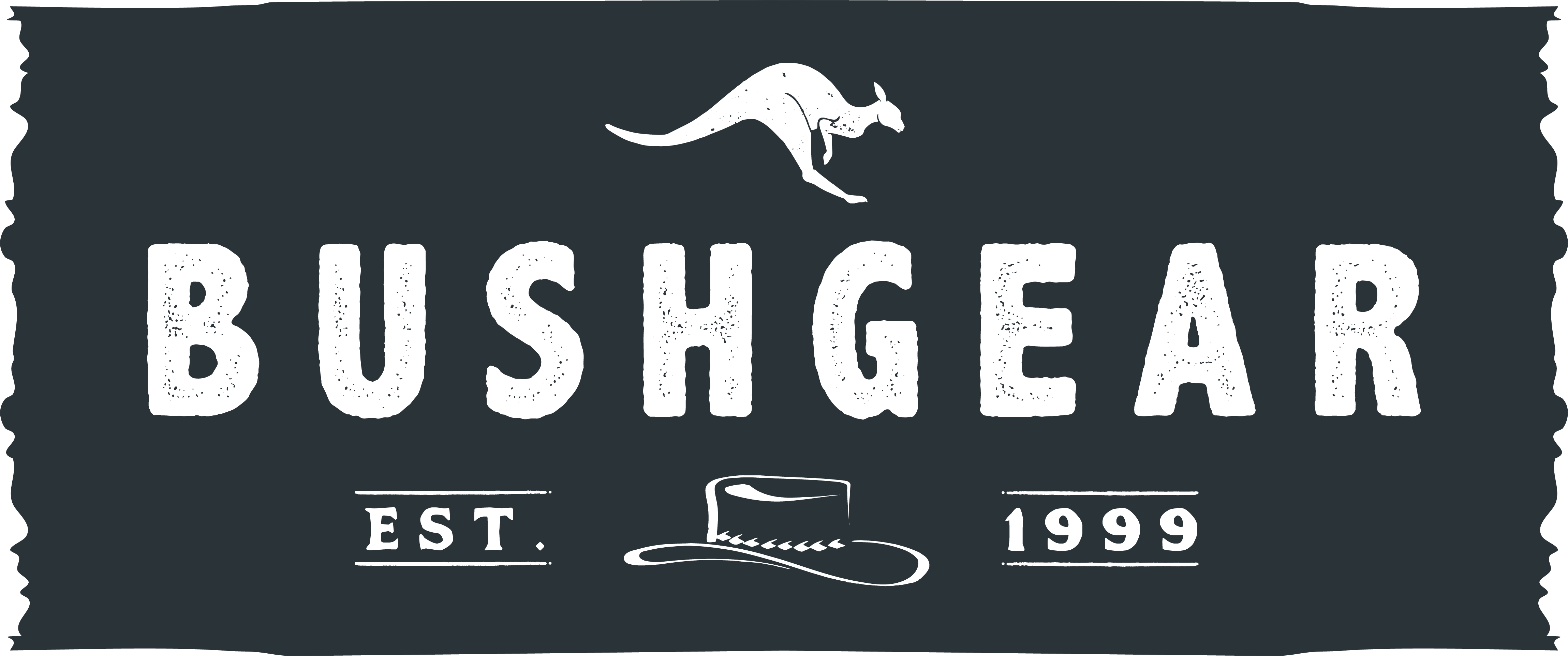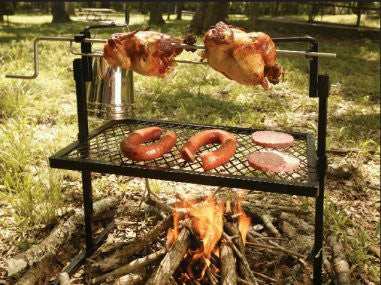
What is an EDC Kit and How To Build One?
Over the last 10 years or so, there has been a continually increasing trend for people to carry essential tools and equipment with them, on a daily basis. If you have not already guessed, EDC stands for every day carry. These items are typically carried in a pocket, in a belt (or other) pouch, in a wallet, in a rucksack or other bag.
Why carry an EDC kit?
There are basically two types of EDC kit that people carry. In a post 9/11 climate, the tendency has been towards survival kit style EDCs, comprising of a multitude of useful items, mainly geared towards survival in urban environments.
The other type of EDC, mainly referred to as a pocket EDC, usually comprises of three or four items at most. These items will be used on a regular, if not daily basis. This type of EDC is geared towards utility, as opposed to survival.
Some people have several EDC kits, each designed to perform a certain task in a certain environment, but these are basically survival kits under another guise. We would argue that a true EDC will be carried every day and used very regularly.
There is also another sub division of EDC kits and that is urban or wilderness. Which is more useful depends on which type of environment you spend most of your time in. Obviously, some equipment can be useful in the city (e.g. a screwdriver) but may be of little or no use in the wild.
So what type of items do people carry in their pockets?
So here are some of the more common items carried nowadays, particularly in urban environments -
1) Writing instrument - A pen, pencil or marker. Particularly useful in urban environments and offices/places of work. Also useful as a survival aid for leaving notes to potential rescuers, making maps, making notes, keeping logs etc.
2) Knife - Urban EDC uses include; opening packaging, food preparation, cutting cordage, getting rid of loose threads, sharpening pencils etc.
3) Flashlight - Great for late night walks, finding stuff that has rolled under the couch, looking in bags in cinemas, not disturbing loved ones at night.
4) Multitool - For all those jobs that you can not complete with a knife alone. Taking apart technological equipment for inspection or repair, repairing other tools and equipment etc.
5) Lighter or ignition source - More of a survival item but may be of great use in certain situations.
6) Stash capsule - A small, waterproof container for storing emergency cash, medications, sd cards, batteries or whatever else needs to be kept safe and dry.
7) A watch - Don't be late. Smart watches can also be of use as some have compasses and other navigational aids built in. For deep wilderness exploration, some watches come with emergency location beacons.
8) A mobile phone - Stay in touch or call for help. Modern phones can be loaded up with maps, survival information, navigational aids, motion trackers and so much more. You may want to purchase a portable battery charger to ensure you have power when you really need it.
9) A water bottle - Help save the environment by cutting down on plastic bottle use. Stay hydrated, you will think more clearly and have more stamina meaning you are more likely to make the right choices. Trapped in an elevator, on the underground train system, in an underground car park, in huge traffic jam - stay hydrated!
10) A medical/first aid kit - For a small EDC kit, a few plasters and a couple of pain killers should do the trick. Just enough for trips and scrapes. Perhaps this will include any personal medication. You will never be able to prepare for every scenario (unless you are ready to carry a defibrillator, ECG, CAT scanner etc) so prepare for the most common problems you are likely to encounter.
11) You will also need some way to carry all these items. There are many options with regards to carry options. Use a pocket, a pouch, a wallet, various clips and carabiners, on a necklace, on a key chain or keyring.
If you spend most of your time away from the madding crowds, you may find the following items of more use for every day carry :
1) Survival Knife - Should be at least 4 inches in length and feature a full tang design for greater strength, reliability and scope of use. Please see our article "How to choose a bushcraft knife".
2) Axe / machete - Axe for woodland environments, machete for tropical environments and jungle. Necessary tools for shelter building, hunting, animal protection and more.
3) Saw - The easiest and most energy efficient way to process wood for fire and shelter building. We would recommend a folding saw which will save space and is easier to transport.
4) Cordage - A most useful tool. Thousands of uses. Cordage is very difficult and labour intensive to make in the wild. Man made cordage will be stronger, more abrasion,UV and mould resistant and basically, will last much longer than anything that can be produced in the wild form natural materials.
5) Water purifying equipment - The easiest way to purify water is to boil it for at least a minute. If boiling is not practicable, you may want another purifying option such as chlorine tablets, water filters, UV water sterilisation equipment or similar.
6) Water bottle - As within an urban environment, staying well hydrated is of paramount importance. Making a water container can be tricky and will probably never be as efficient and safe as a commercial water bottle. Aim for a stainless steel container which is not plastic lined so can be used to boil water.
7) Fishing/trapping kit - Although it is possible to build trapping and fishing equipment from natural resources, in a true survival situation, it may not be practical, so having ready made gear will give you a distinct advantage as you will be able to start feeding yourself without too much laborious setting up. In other words you will be able to start feeding yourself straight away.
8) Tarp - A completely watertight membrane that will allow you to build a weatherproof shelter. This can save you a lot of time and energy as making a shelter truly waterproof can be very labour intensive and difficult. A good tarp will be a great multi use item, other uses including : being used as poncho, wind block,emergency stretcher, water collector/carrier, hammock and more.
9) Fire lighting equipment - A ferrocerium rod, lighter, matches, magnifying lens, fire piston, battery and iron wool, potassium permanganate etc. Fire is one of the most useful survival tools, we suggest carrying at least two forms of ignition and some high energy tinder. Particularly important in damp or cold conditions or when big game or predators are present.
10) First aid kit - There are natural remedies available in the wild but many are difficult to extract and process into a usable form. Just try and make your own pain killer, suture kit or antibiotic and you will discover this very quickly. There is no way to prepare for every eventuality so just carry what is most likely to be of use. We recommend the following - sterile bandages, plasters, a course of general antibiotics, pain killers, diarrhea medication, anti histamines (for animal and insect bites or for contact with poisonous plants), sutures, steri strips, wound cleaning spray (antiseptic), tweezers, duct tape (many medical uses such as holding bandages in place, keeping plasters in place, immobilising limbs etc), eye bath solution, and anything else you may want or need to add such as prescribed medications.
11) As with a pocket EDC, you will need some way to carry all these items, for example, a rucksack / backpack, tool roll etc. A classic canvas military or backpacking bag works well.
As usual, what you choose to carry is down to personal preference. What one individual may find useful to carry regularly, may well be completely different to another individual's choice.
A good way to find out what works for you is to start carrying a few items that may be relevant to you. After a month or so, analyze which items you use regularly and keep these in the kit. The items you use the least or not at all, can possibly be disregarded and replaced with something you do find useful. Alternatively, start off by carrying a large and varied EDC and through the process of elimination, start removing the items that are used least frequently or not at all.
Try and keep your EDC kit minimal. The smaller the kit is, the easier it will be to carry it. The easier it is to carry, the more likely you are to carry it. Therefore you will be more likely to have the tool you need when a job presents itself. This is the secret to a useful EDC kit.
Good luck with your EDC creations.

